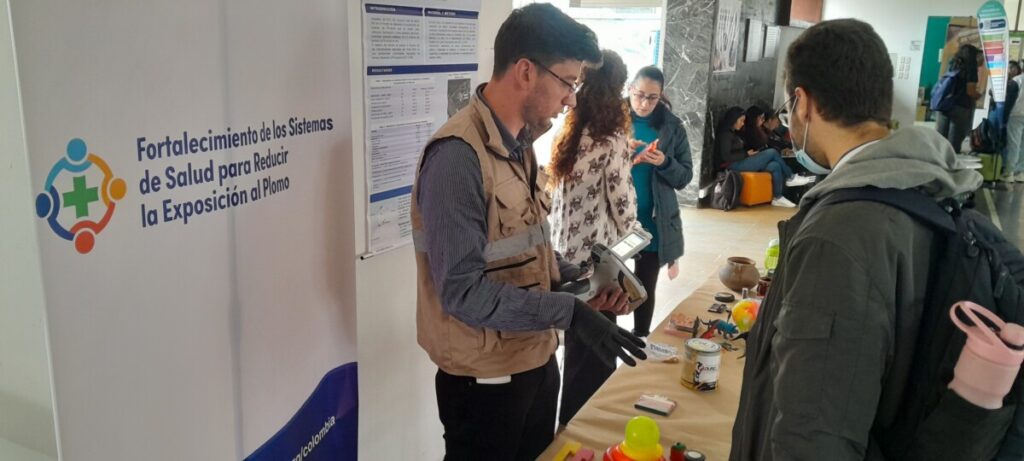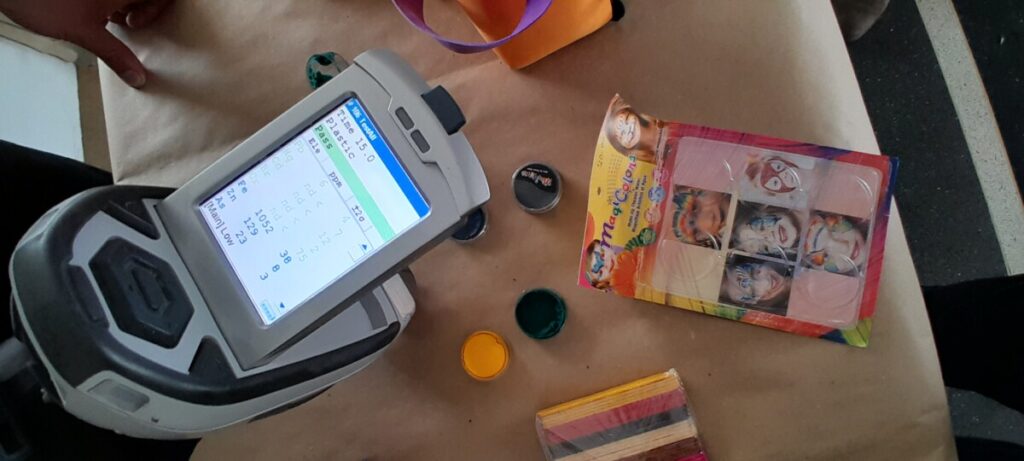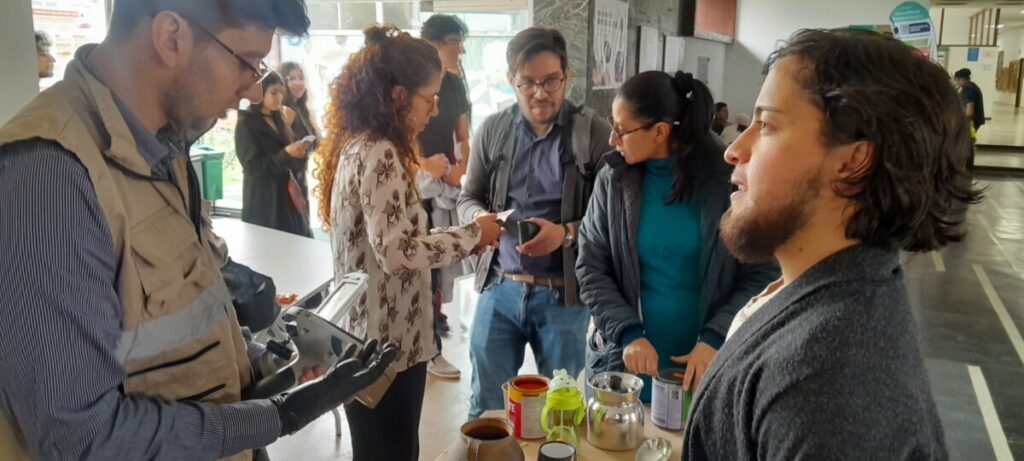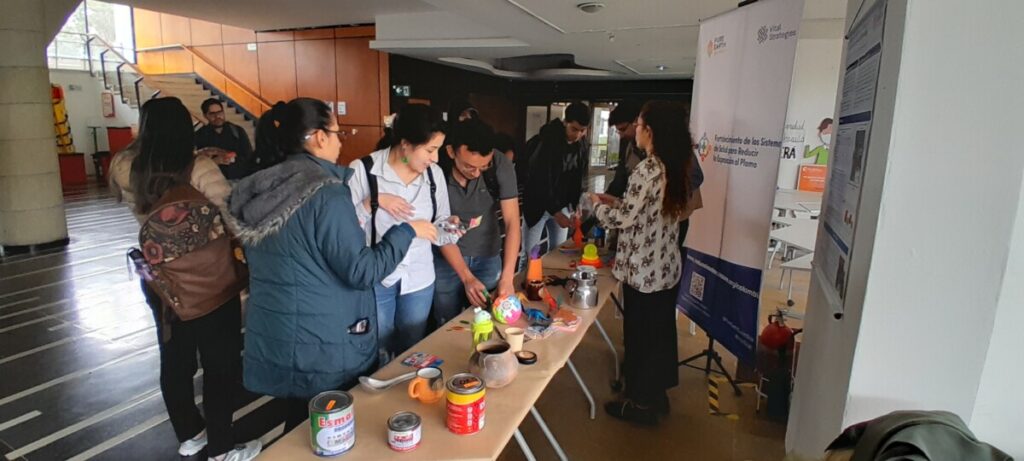
Health and environmental experts from the Pure Earth Colombia team guided stakeholders through concrete examples of everyday consumer products that may contain traces of lead.
As part of Lead Poisoning Prevention Week 2023, last Friday, October 27th at the Faculty of Medicine of the National University of Colombia, Pure Earth Colombia set up a learning station with the aim of raising awareness in academia about the importance of advancing research on the sources of lead exposure. Attendees had the opportunity to learn detailed information about testing everyday consumer products with a portable X-ray fluorescence (XRF) meter that detects heavy metal contamination, in this case, lead.
EXPLORING SOURCES OF LEAD EXPOSURE

With the support of a portable X-ray fluorescence (XRF) meter, the technical team conducted tests on different everyday consumer products.
It is estimated that approximately 1 in 3 children worldwide have elevated lead concentrations in their bodies, representing approximately 800 million children. Therefore, experts around the world have presented effective solutions that must be studied in depth to reduce the harm from exposure in communities, as all people could be in contact with lead in their daily lives.
Previous studies have identified lead contamination in a variety of everyday consumer items, however the geographic variables in the sources of lead exposure have been poorly understood.
Seeking to better understand which products are most likely to be contaminated with lead and how contamination levels vary across a diverse set of low- and middle-income countries, Pure Earth recently presented the results of Rapid Market Screening (RMS) analysis done in 25 countries. Of the 5,010 samples collected, 18% were contaminated with lead at levels exceeding applicable guideline levels.
It is important to note that Pure Earth recommends that the RMS data be used to identify possible trends and products that warrant further attention and evaluation. The data should be considered suggestive, not conclusive or representative of all similar products in these countries.
LEARNING STATIONS: DEEPENING KNOWLEDGE

The main objective of the learning station was to raise awareness of the importance of advancing research on the sources of lead exposure.
The installation of the learning station at the UNAL School of Medicine provided a tangible space for understanding the various sources of lead exposure. Health and environmental experts guided stakeholders through concrete examples of everyday consumer products that may contain trace amounts of lead. The intent was to illustrate the magnitude of the problem and highlight the need for further investigation. This hands-on demonstration also provided valuable insights into the tools available to identify and address the presence of lead in an everyday environment.
EFFECTIVE SOLUTIONS TO A GLOBAL PROBLEM

The installation of this learning station was made possible thanks to the support of the SALA Research Group of the Interfaculty Doctorate in Public Health of the National University of Colombia.
The experts emphasized that effective solutions exist and must be implemented on a larger scale to mitigate the harm caused to millions of children worldwide. The presence of lead in everyday life affects everyone, regardless of their geographic location. Action is needed, and awareness is the first step toward implementing effective measures.
The initiative at the Faculty of Medicine of the National University of Colombia has marked a milestone in raising awareness of lead exposure and the participation of academia is fundamental.
We move forward with these first steps in the country with the purpose of fostering in the academic community, health professionals, government and the general public, the interest and commitment to address this issue and work towards a future where lead exposure is a concern of the past. The health and well-being of future generations depends on our action today.
Learn more about our local projects by visiting www.pureearth.org/colombia

